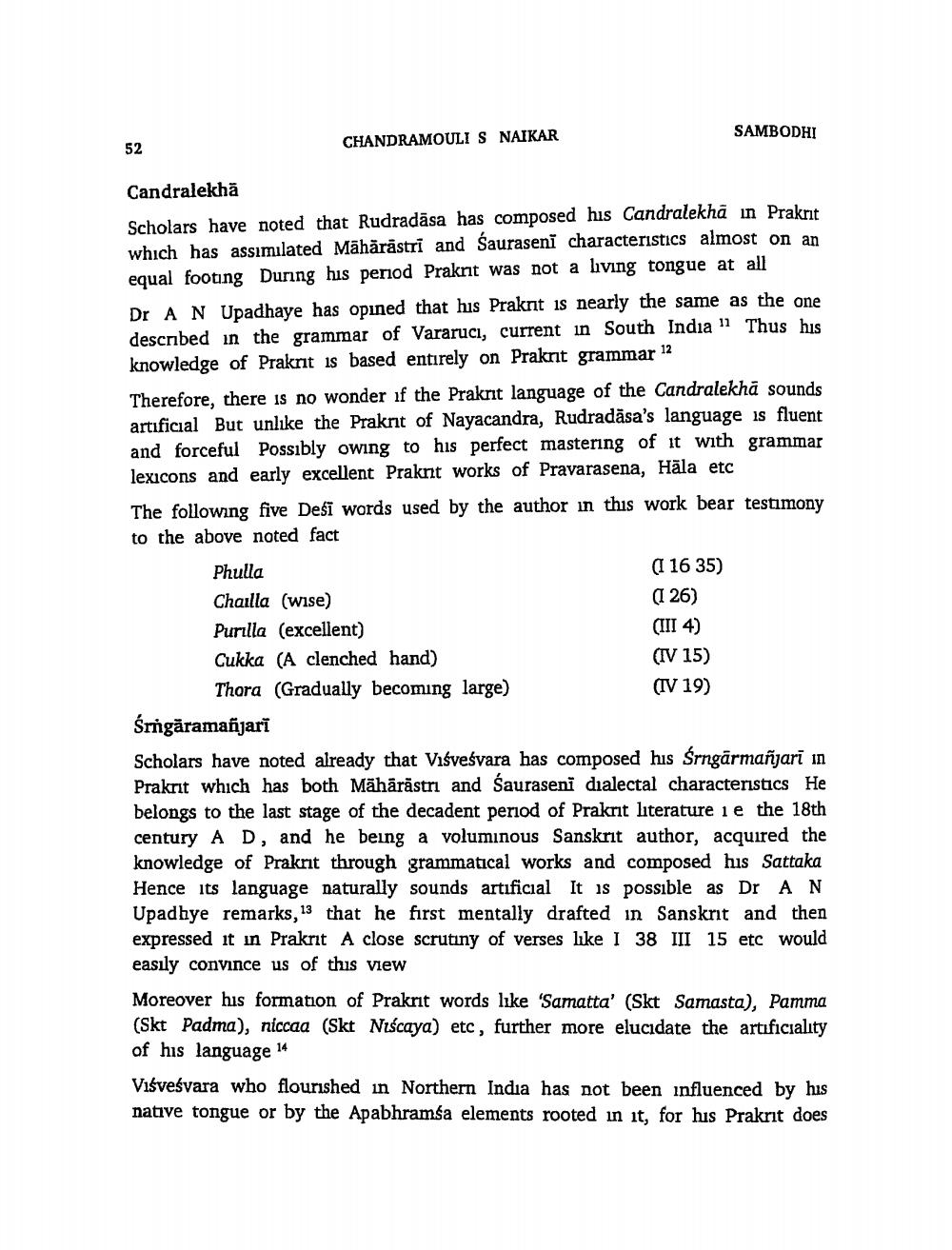________________
52
CHANDRAMOULI S NAIKAR
Candralekha
Scholars have noted that Rudradāsa has composed his Candralekha in Praknt which has assimilated Mähärästri and Sauraseni characteristics almost on an equal footing During his period Praknt was not a living tongue at all
SAMBODHI
Dr AN Upadhaye has opined that his Prakrit is nearly the same as the one described in the grammar of Vararuci, current in South India " Thus his knowledge of Prakrit is based entirely on Prakrit grammar
12
Therefore, there is no wonder if the Praknt language of the Candralekha sounds artificial But unlike the Praknt of Nayacandra, Rudradāsa's language is fluent and forceful Possibly owing to his perfect mastering of it with grammar lexicons and early excellent Praknt works of Pravarasena, Häla etc
The following five Dell words used by the author in this work bear testimony to the above noted fact
Phulla
Chailla (wise)
Purilla (excellent)
Cukka (A clenched hand)
Thora (Gradually becoming large)
(1 16 35)
(126)
(III 4)
(IV 15)
(IV 19)
Śrngāramafijari
Scholars have noted already that Visvesvara has composed his Śrngärmañjarī in Prakrit which has both Mähärästri and Sauraseni dialectal charactenstics He belongs to the last stage of the decadent period of Praknt literature ie the 18th century AD, and he being a voluminous Sanskrit author, acquired the knowledge of Prakrit through grammatical works and composed his Sattaka Hence its language naturally sounds artificial It is possible as Dr AN Upadhye remarks, 18 that he first mentally drafted in Sanskrit and then expressed it in Prakrit A close scrutiny of verses like I 38 III 15 etc would easily convince us of this view
Moreover his formation of Praknt words like 'Samatta' (Skt Samasta), Pamma (Skt Padma), niccaa (Skt Niscaya) etc, further more elucidate the artificiality of his language 14
Visvesvara who flourished in Northern India has not been influenced by his native tongue or by the Apabhramsa elements rooted in it, for his Prakrit does




